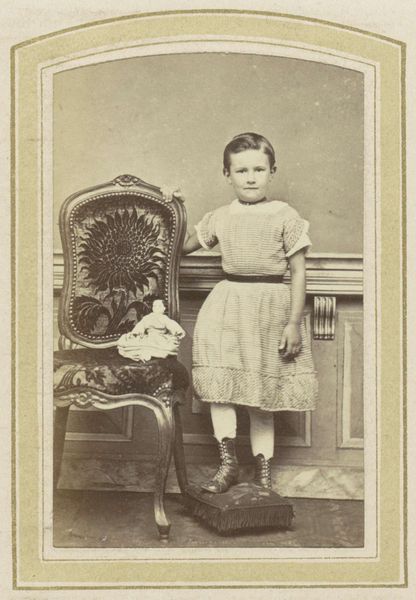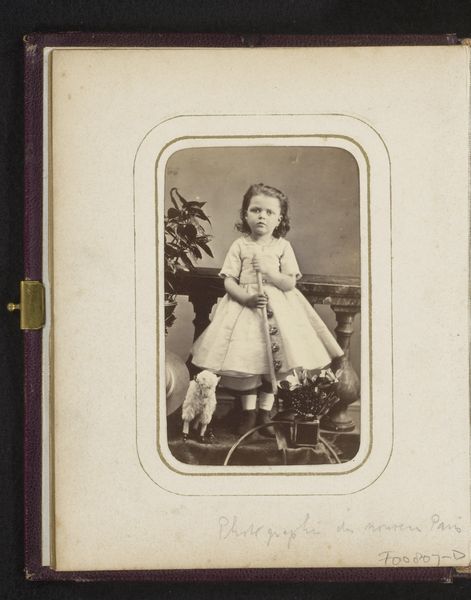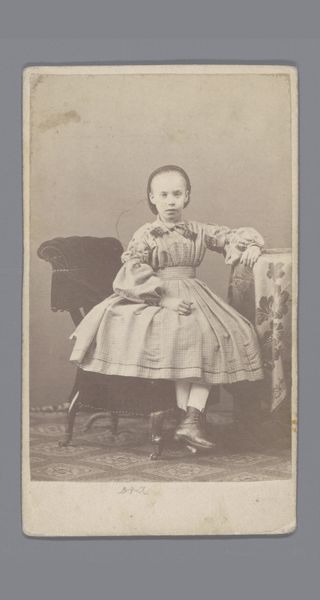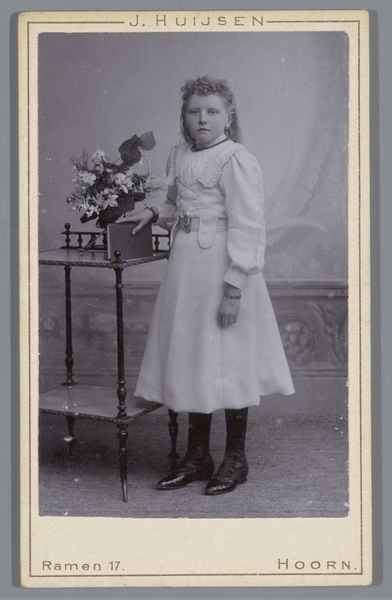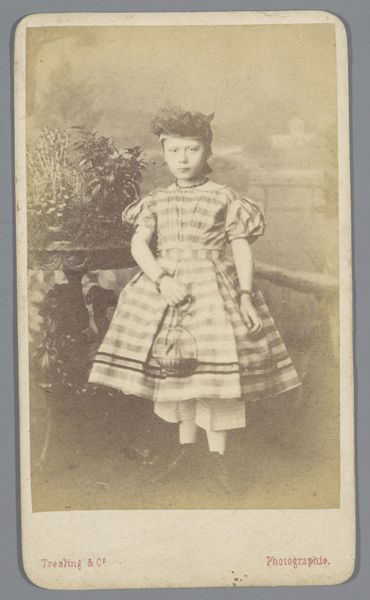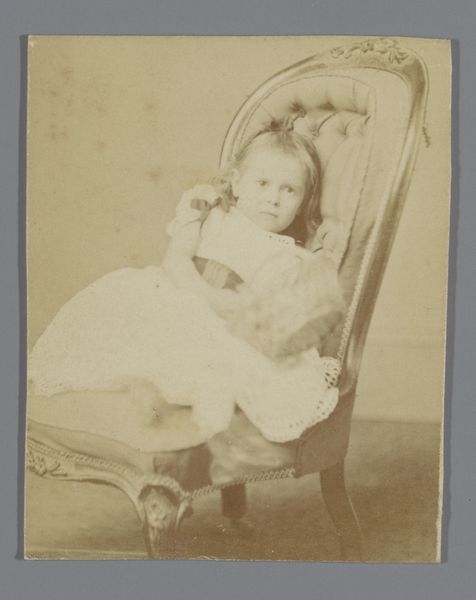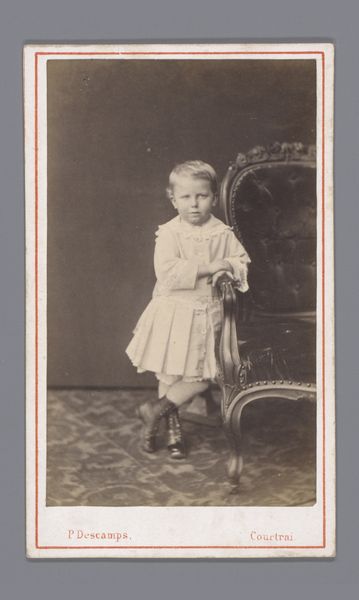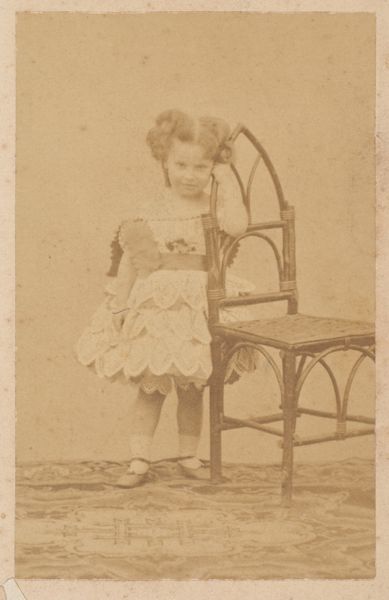
photography, gelatin-silver-print
#
portrait
#
photography
#
historical fashion
#
child
#
gelatin-silver-print
Dimensions: height 101 mm, width 63 mm
Copyright: Rijks Museum: Open Domain
Curator: This is an undated, unnamed photographic print from between 1855 and 1885, titled “Portret van een onbekend meisje met een kat,” which translates to "Portrait of an unknown girl with a cat," a gelatin silver print. What's your first reaction to it? Editor: Stark. The grey tones feel austere, but the softness of the young girl and her pet hint at something more tender, almost vulnerable. It’s the stillness, perhaps, and formal composition. Curator: Look at the staging – the draped column, the figurine on top. I think it reflects a calculated effort toward social elevation through material culture. Notice her dress—the lines and layers represent access to factory-produced textiles, available because of industrial means, which were far cheaper than handcrafted wares of the past. Editor: Good point. And that tiny, decorated cushion upon which she casually rests her foot! It underscores that deliberate crafting of a visual narrative and performance, but her gaze makes it feel quite intimate regardless. The way her dress echoes the background, its own structural patterns mirroring the drapery. Do you see how those horizontals bind everything? Curator: What strikes me is how mass-produced fashion met unique presentation in studio portraits, thus rendering people’s aspirational identities permanent on photographic paper. These photographic practices allowed everyday citizens, not just the elite, to self-fashion and negotiate a space in the societal record. Editor: So, her simple dress is more than just cloth; it signifies a move towards accessibility in production and identity. And the gesture of resting her foot there transforms an object of simple adornment into an emblem of potential prosperity and power? Curator: Precisely! That cat in her lap adds an aspect of humanity but also value. We see how evolving processes of fabrication and photographic depiction created visual access to class performance. Editor: Considering that backdrop, it reminds us that such performances are still, even then, staged within the frames and cultural scripts handed down through ages of portraiture. Even what feels accessible, mass-produced, exists because someone is staging it as such. Curator: These works reveal how photographic prints gave a platform to negotiate, perform, and question social classes amidst industrial growth, prompting examination of the image's production, materiality, and its societal effects. Editor: The layers here reveal photography as more than a mere mirror—they were crafting both image and narrative. It's that subtle interplay of staged portraiture and genuine presence that remains haunting, now as much as then.
Comments
No comments
Be the first to comment and join the conversation on the ultimate creative platform.
